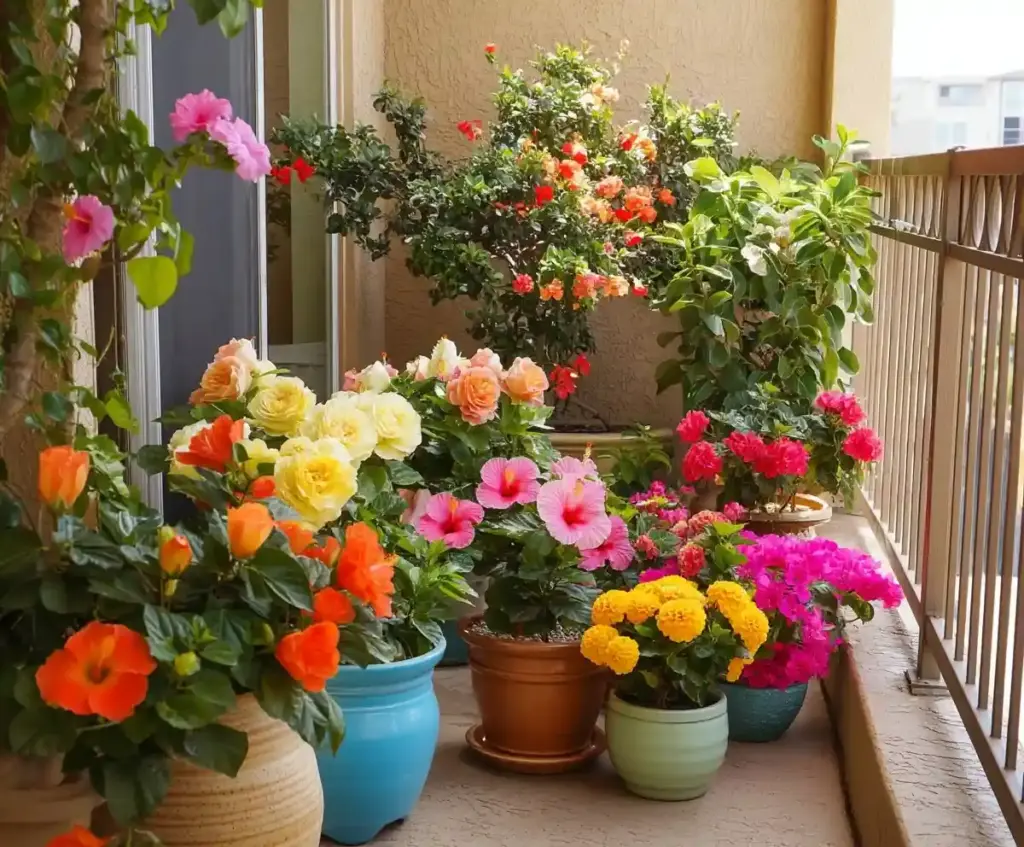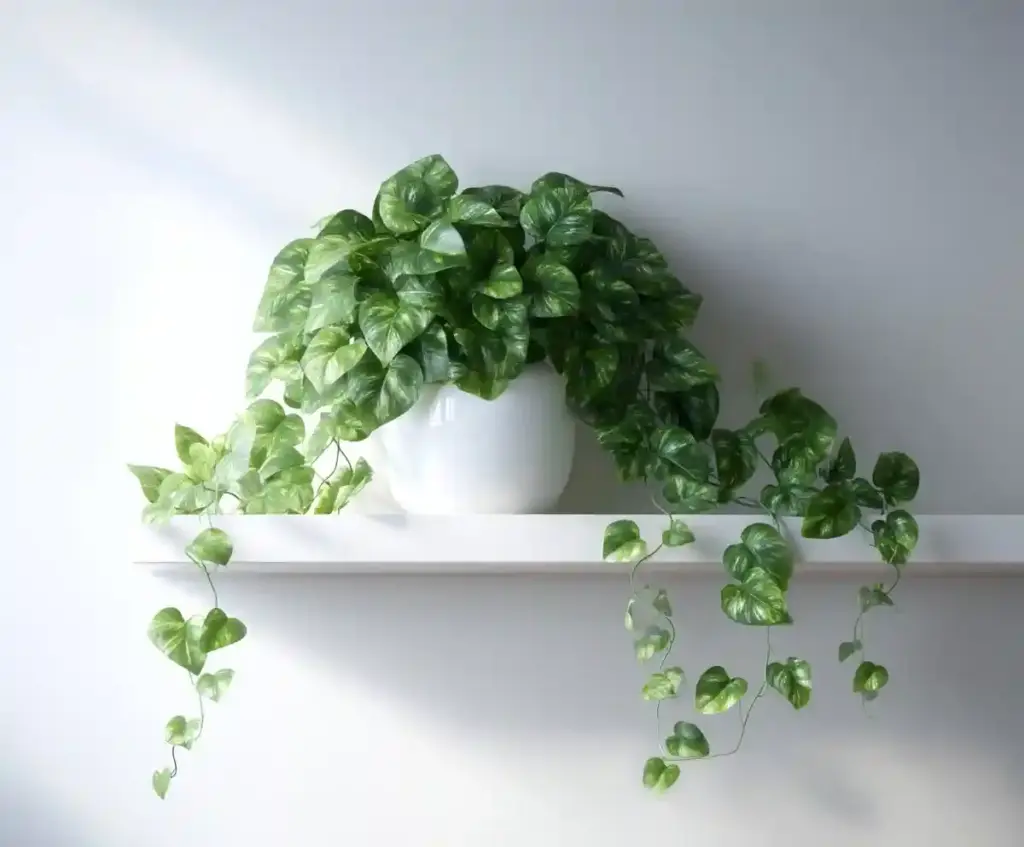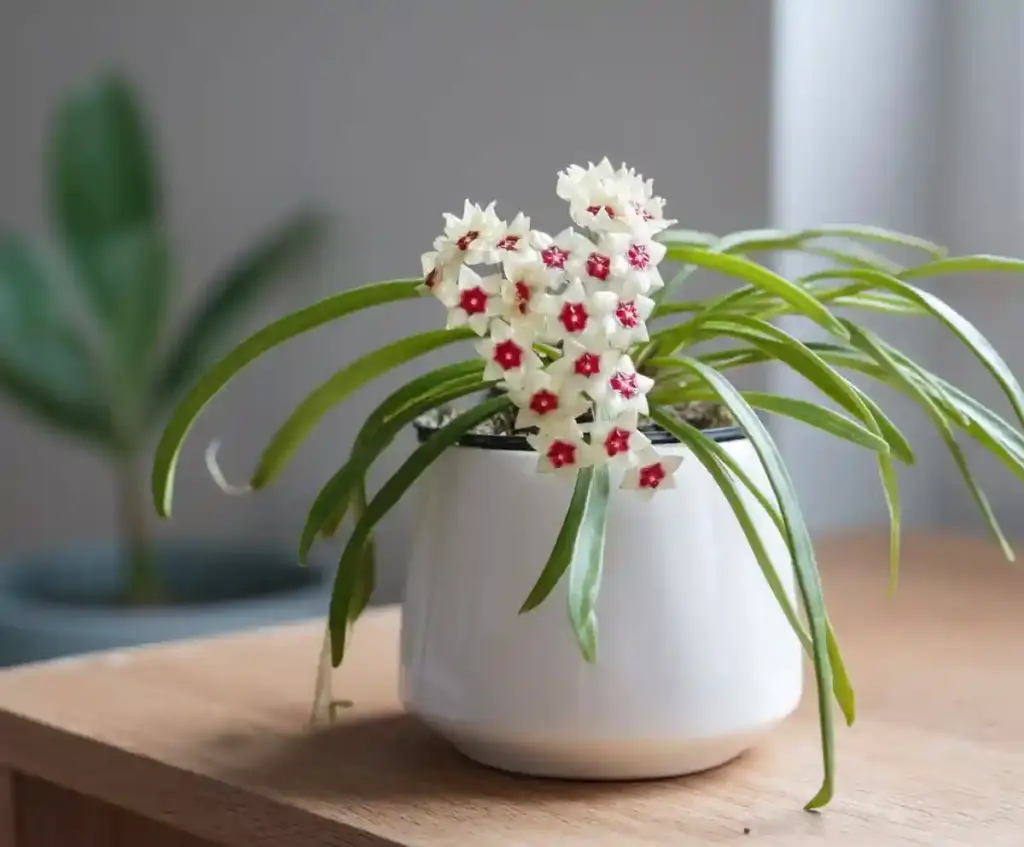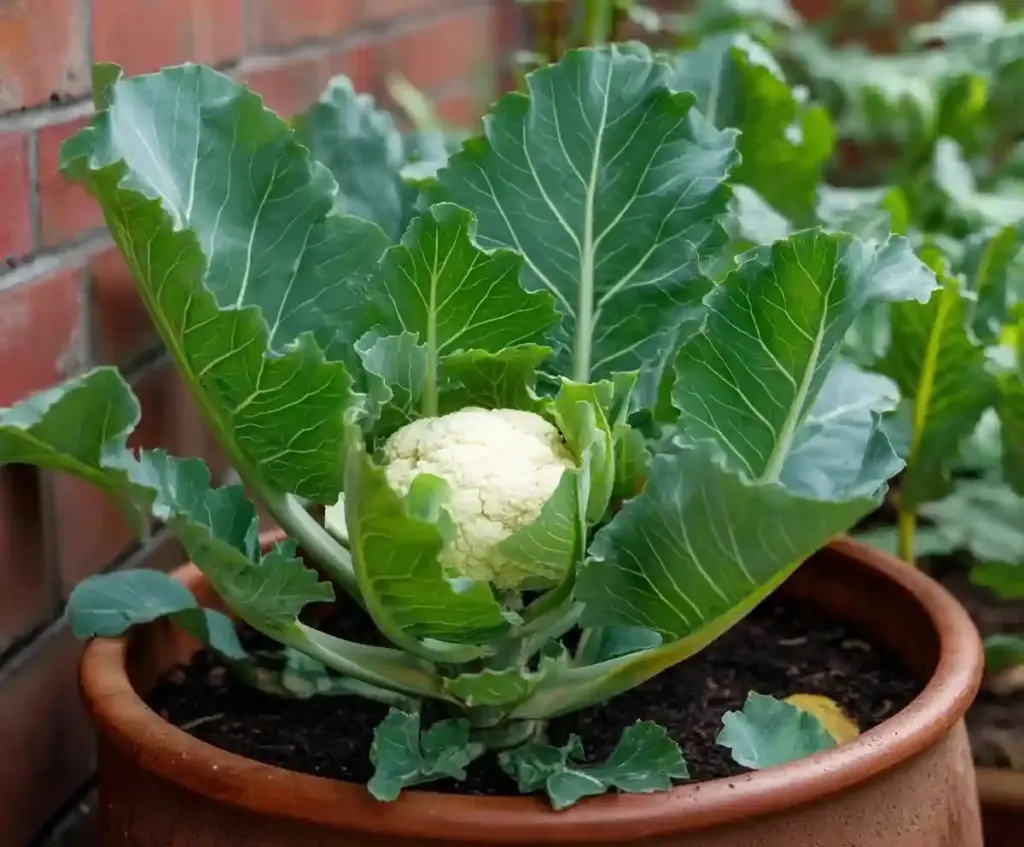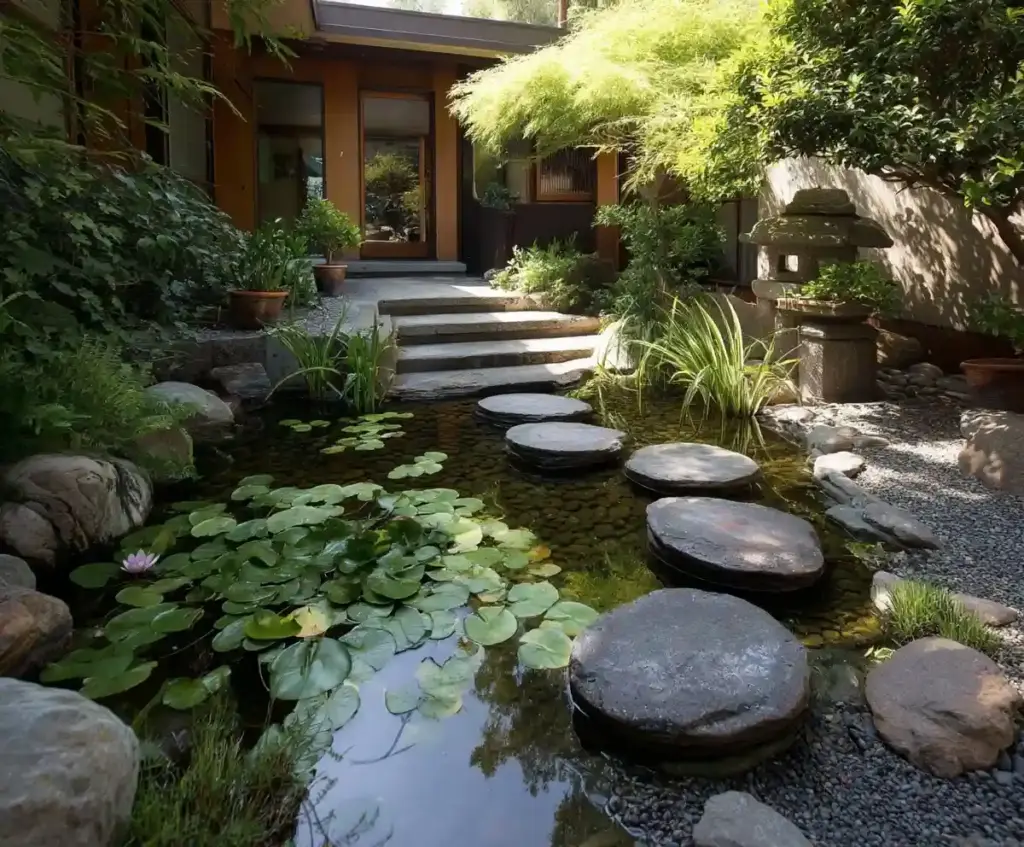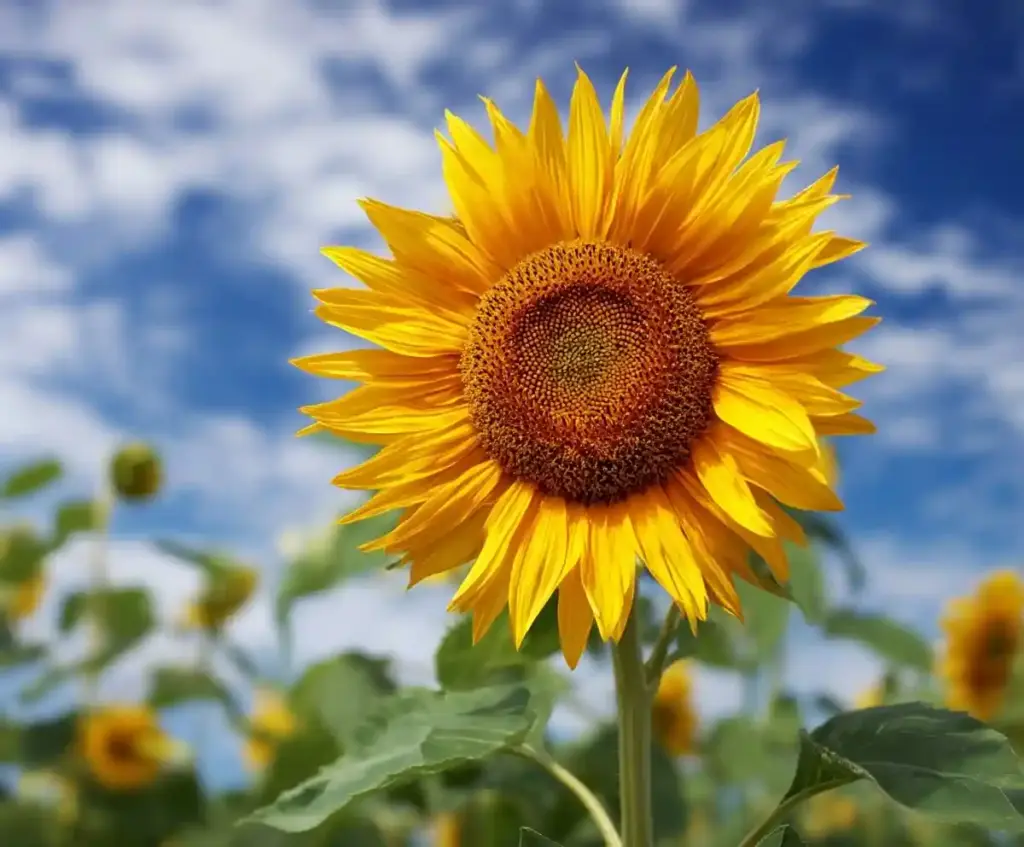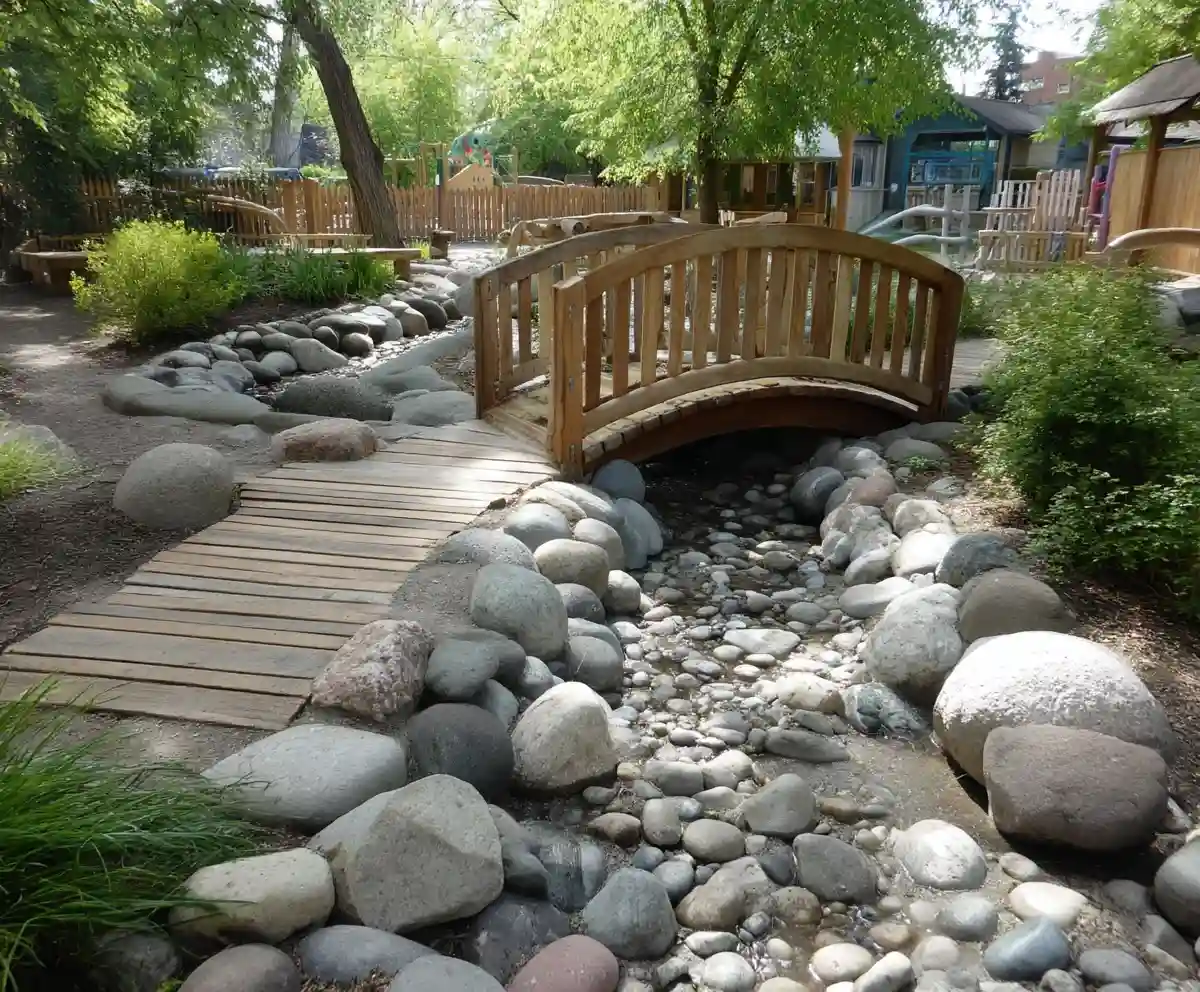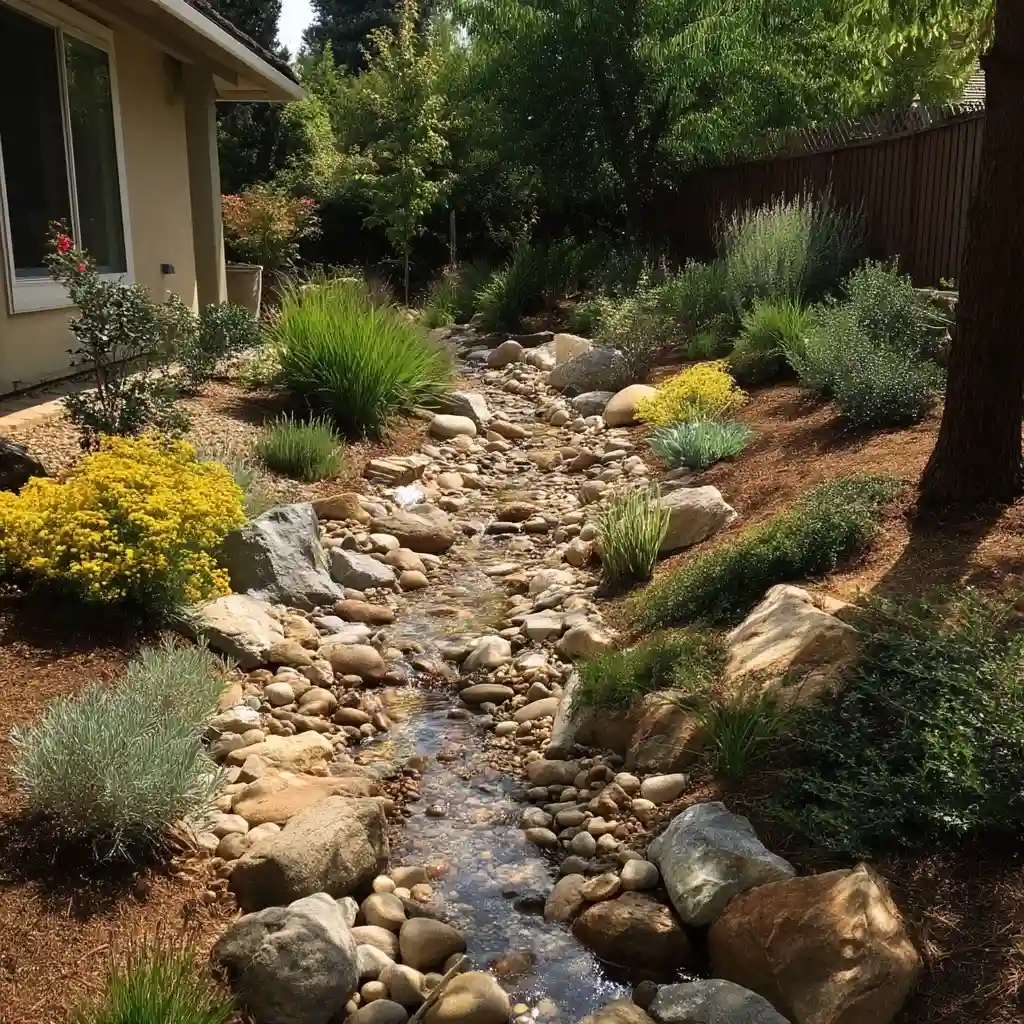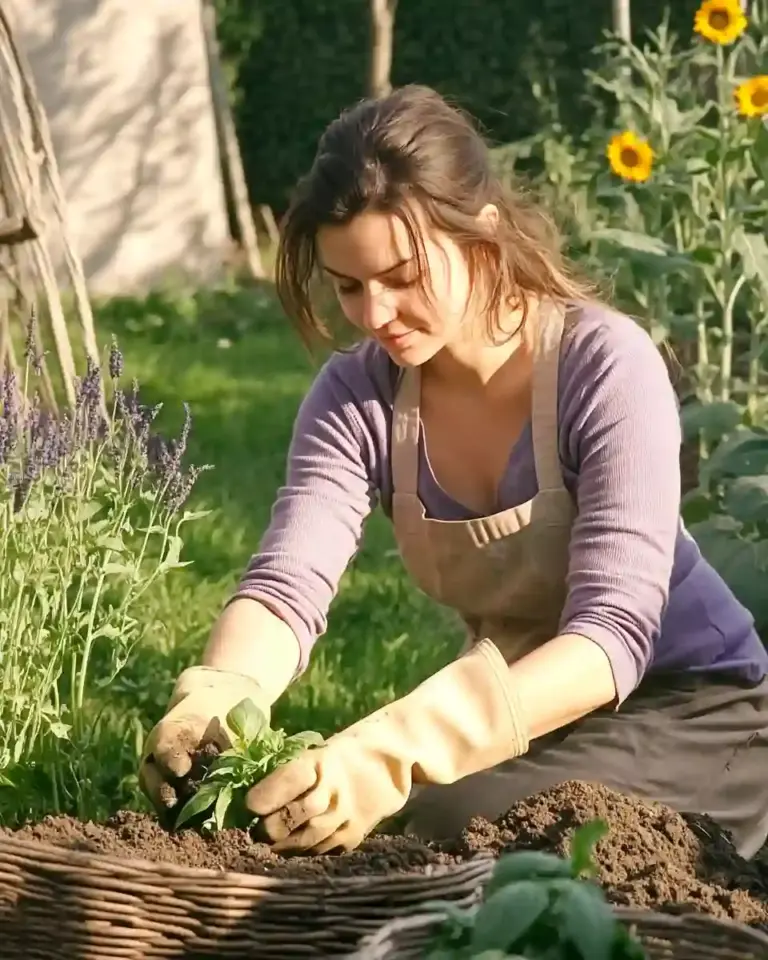Dry creek bed landscaping is more than just an attractive garden feature—it’s a smart and functional solution for managing rainwater runoff, controlling erosion, and enhancing outdoor aesthetics. Whether your yard suffers from poor drainage or you simply want to add a natural-looking element to your landscape, a dry creek bed can blend form and function beautifully. With the right layout, materials, and plant pairings, this landscaping idea becomes a long-lasting, low-maintenance addition to any yard.
Table of Contents
1. Sloped Yard Dry Creek Bed
If your property sits on a slope, a dry creek bed can help turn a tricky landscape into a visually appealing and functional garden feature. Instead of letting rainwater erode your hillside, channel it through a meandering dry creek lined with river rocks and bordered by drought-tolerant plants.
To mimic the look of a natural stream, combine rocks of varying sizes—small pebbles, medium stones, and large boulders. Position them strategically along the slope to create gentle curves that slow the water and reduce runoff speed. Add hardy plants like rosemary, foxtail fern, and yarrow along the edges for softness and year-round texture.
This method doesn’t just look great—it works hard behind the scenes to protect your landscape from water damage.
2. River Rock Dry Creek Bed
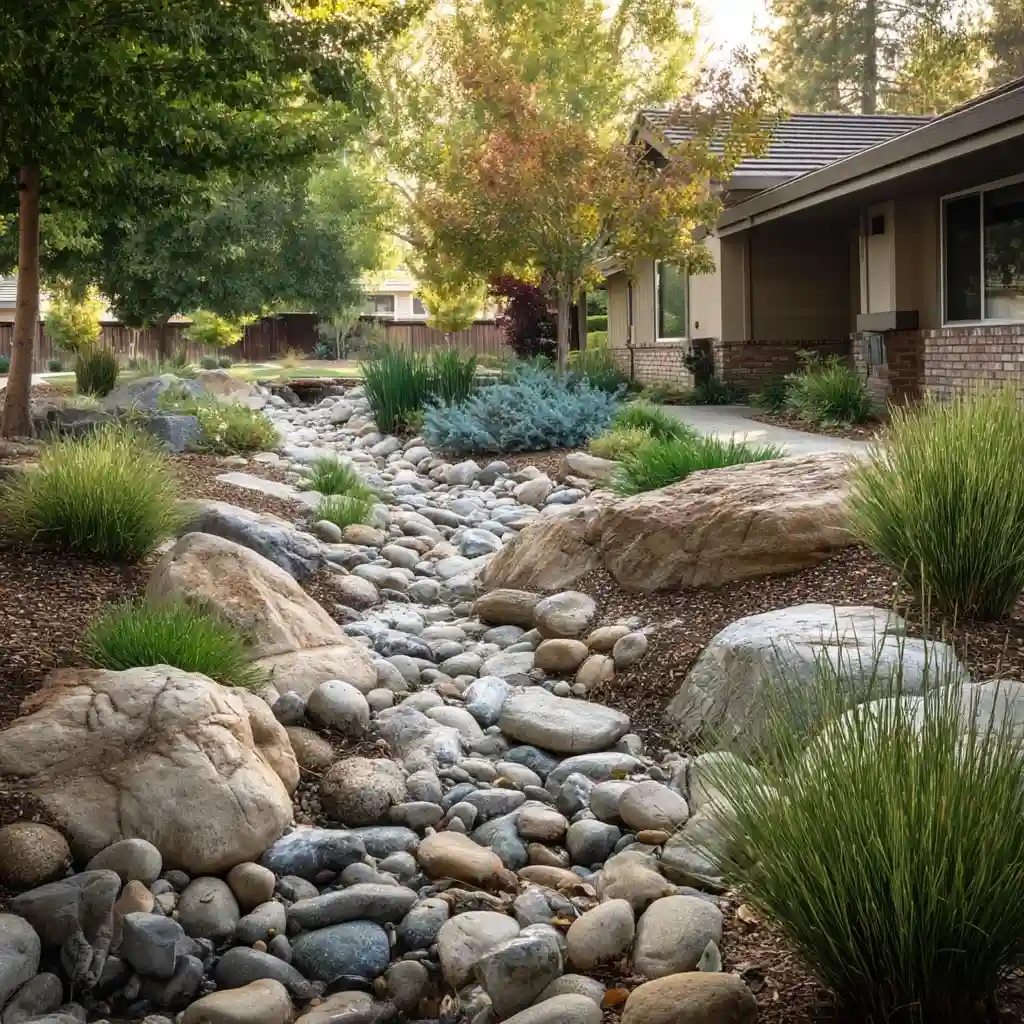
One of the most natural-looking materials for a dry creek bed is river rock. These smooth, rounded stones resemble those found in real streams, shaped by years of tumbling water. Using them in your design instantly creates a more authentic, organic look.
Start with a base of large river rocks to outline the shape of your creek bed. Then layer in smaller stones to fill the center, gradually decreasing the size to mimic natural sediment flow. Place larger boulders at turning points or dips in the bed to anchor the design and control direction.
River rock is especially effective when used in wide, curving patterns. This softens the look and blends beautifully with surrounding landscaping, whether it’s mulch, groundcover, or garden plants.
3. Rain Drainage Dry Creek Bed
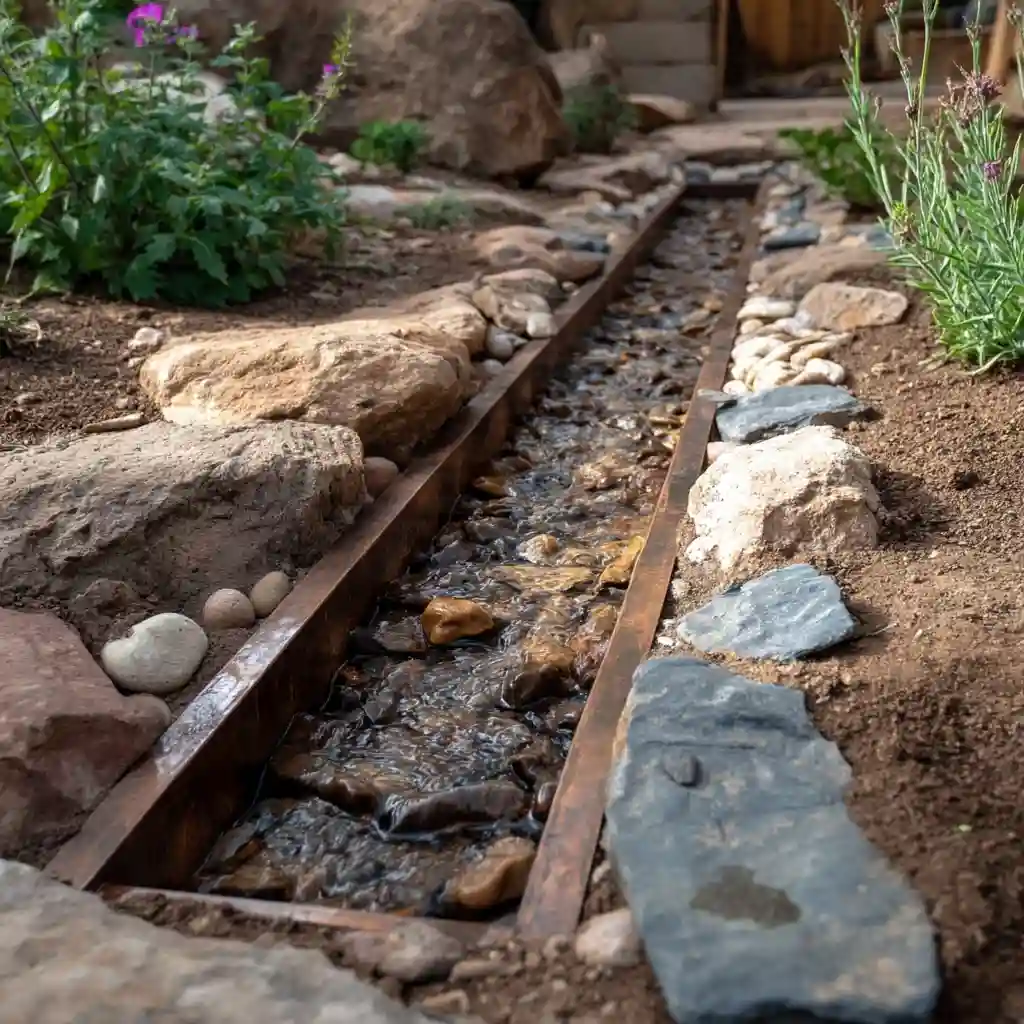
A well-designed dry creek bed can handle more than just visual appeal—it’s also an efficient solution for managing rainwater runoff, especially near downspouts or patios. By guiding excess water safely through the landscape, it helps prevent pooling, erosion, and soggy patches in your yard.
To create a rain drainage dry creek bed, start by determining the water’s natural path. Dig a shallow trench along this route, then line it with landscape fabric to stop weed growth. Use flat slate stones for clean borders and fill the center with small, round rocks or gravel.
Enhance the function by connecting a rain chain or gutter to the beginning of the creek bed. This directs rainfall straight into the trench, where it can gently disperse into the soil or lawn—without damaging your garden.
4. Wet Climate Dry Creek Bed

In regions where heavy rainfall is common, managing water flow is critical to protecting your landscape. A dry creek bed offers an attractive and practical way to divert water away from your home, garden beds, and footpaths.
Start by observing where water tends to pool or rush after storms. That’s your ideal spot for installing a creek bed. Dig a wide, shallow channel, and use large anchor stones to stabilize key points along the path. Fill the channel with various sizes of rock—using a mix helps slow water flow and improves drainage efficiency.
In wetter climates, be sure to slope the creek bed slightly away from your home or garden structures. This encourages better movement and absorption into the soil, reducing the risk of washouts or flooding during downpours.
5. Japanese Garden Dry Creek Bed

For those who love serene, minimalist landscapes, a dry creek bed can become a stunning centerpiece in a Japanese-style garden. These gardens often use stone and water elements to create calm, symbolic spaces—and a dry creek mimics flowing water in a meditative way.
To achieve this look, use flat, dark-toned stones like slate paddles. Overlap them in the direction you want the “stream” to flow, creating the illusion of movement. Keep the bed’s shape gentle and meandering, avoiding sharp angles or rigid lines.
Surround the creek bed with lush, low-maintenance greenery such as iris, moss, ferns, or ornamental grasses. Add a small wooden bridge or stepping stones to enhance the peaceful atmosphere and provide a functional walkway through the garden.
6. Gutter Downspout Dry Creek Bed
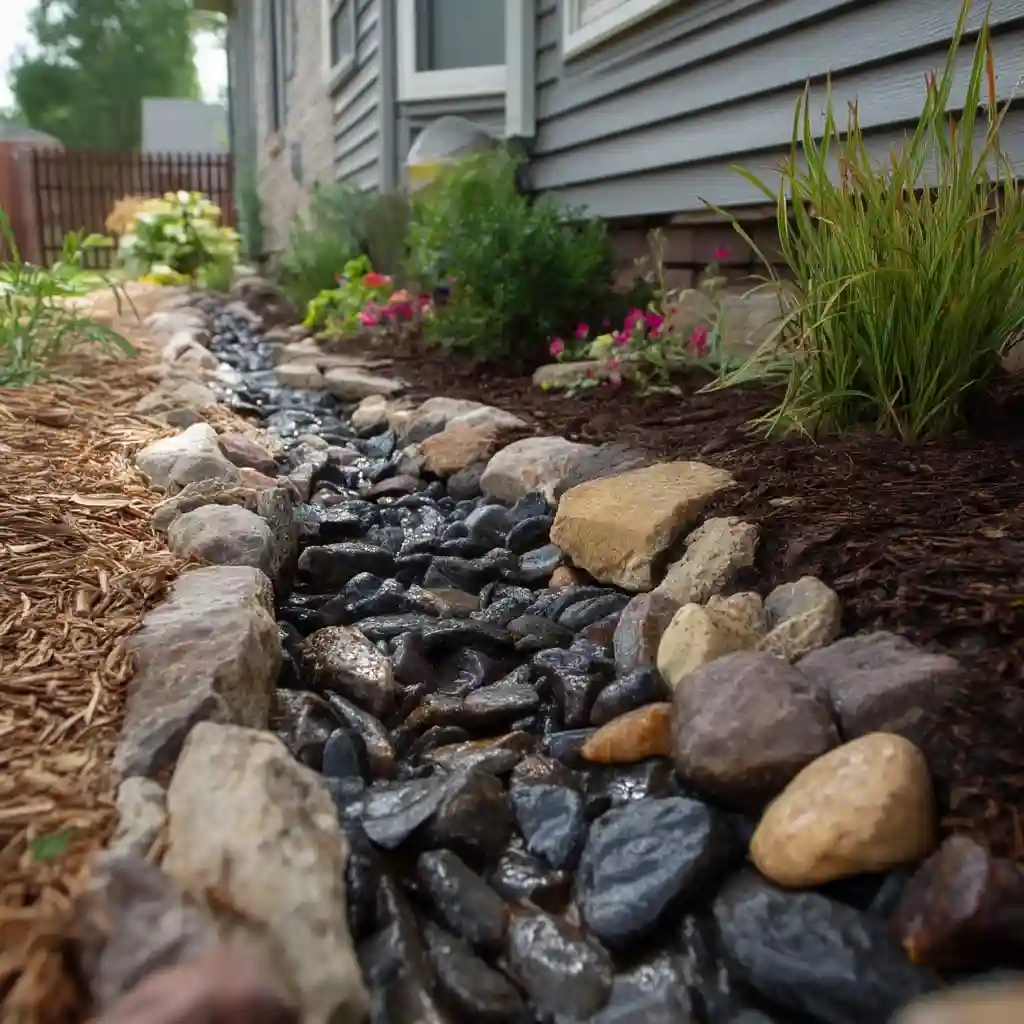
Tired of those bulky splash blocks under your gutters? A dry creek bed offers a more attractive and customizable alternative for redirecting water from downspouts while blending beautifully into your landscaping.
Begin by removing the splash block and digging a shallow trench starting from the base of your downspout. Line it with landscape fabric to prevent weeds and erosion. Then, fill the bed with smooth black river rocks or stones that complement your mulch or garden design.
This mini creek bed doesn’t just improve drainage—it becomes a visual upgrade to an otherwise overlooked area. You can make it as short or as long as needed to handle water volume and guide runoff safely away from your home’s foundation.
7. Driveway Dry Creek Bed
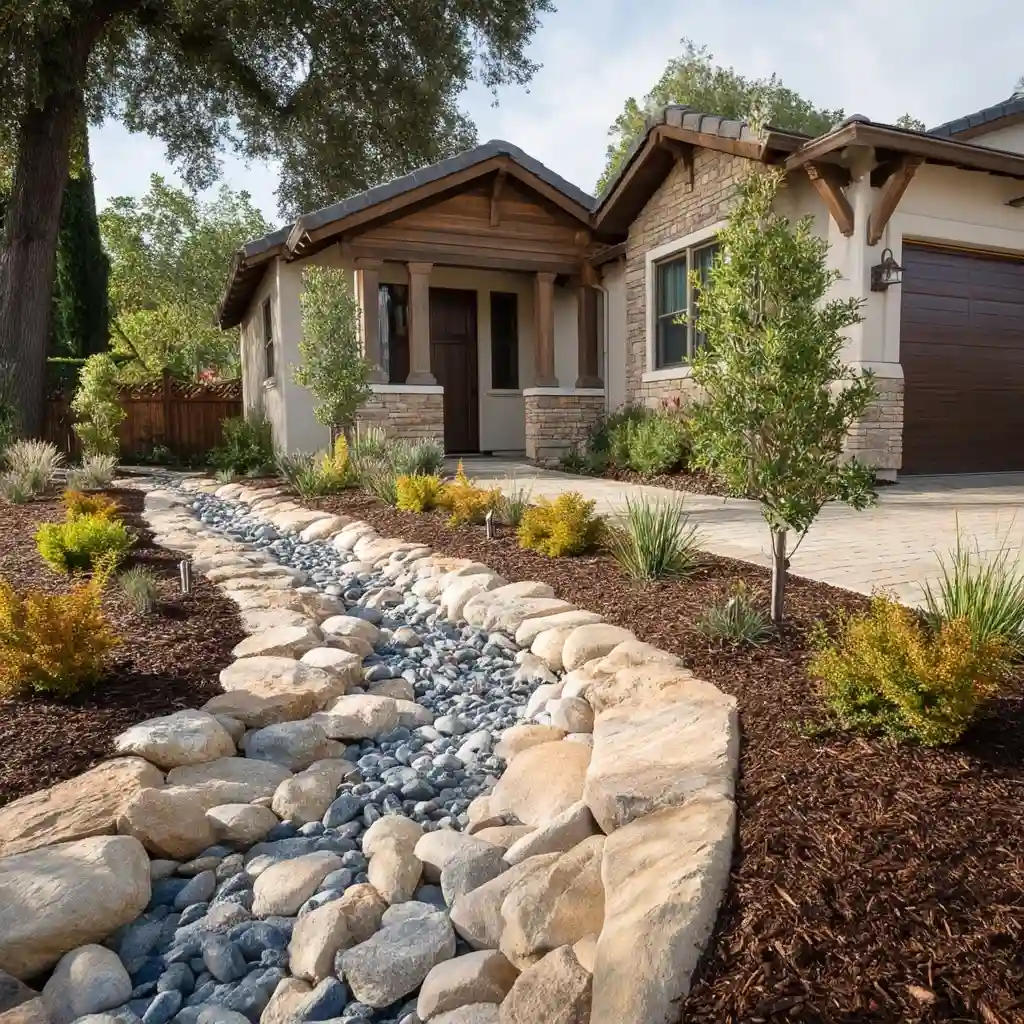
Water runoff from driveways can erode soil, flood nearby plant beds, or cause puddles in low-lying areas. A well-placed dry creek bed can redirect that runoff, while also boosting your home’s curb appeal.
Start by identifying where water typically flows off your driveway. Dig a channel along that path, and make sure it gently slopes away from your home. Fill it with a blend of light-colored rocks to contrast against surrounding mulch or grass, creating a striking visual element.
Use larger stones or boulders at entry points to slow heavy runoff. Border the bed with drought-tolerant groundcovers or ornamental grasses to soften the edges and tie the feature into the rest of your yard.
8. Erosion Control Dry Creek Bed
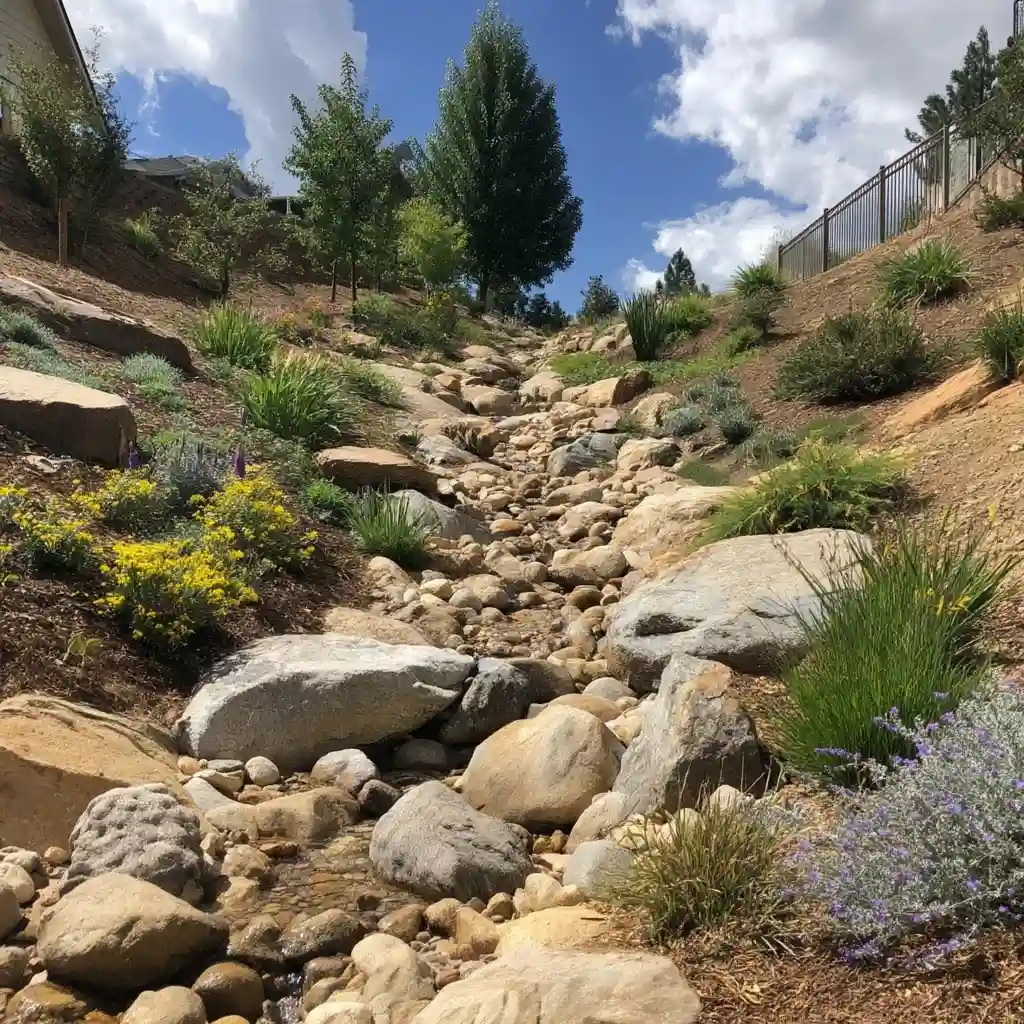
Sloped or uneven terrain is especially vulnerable to erosion, particularly after heavy rain. A strategically placed dry creek bed can stabilize the soil and guide water safely downhill, preventing damage to your yard or garden structures.
To begin, carve out a gently sloping path that mimics the direction water naturally wants to flow. Use a mix of rock sizes—larger stones and boulders at the start and middle of the bed help absorb water energy, while smaller gravel fills in the rest for a finished look.
For extra erosion protection, install check dams or shallow dips along the creek bed. These features slow down water during storms and encourage absorption into the soil. Finish the design with low-growing plants or native grasses that root deeply and help hold the soil in place.
9. Play Yard Dry Creek Bed
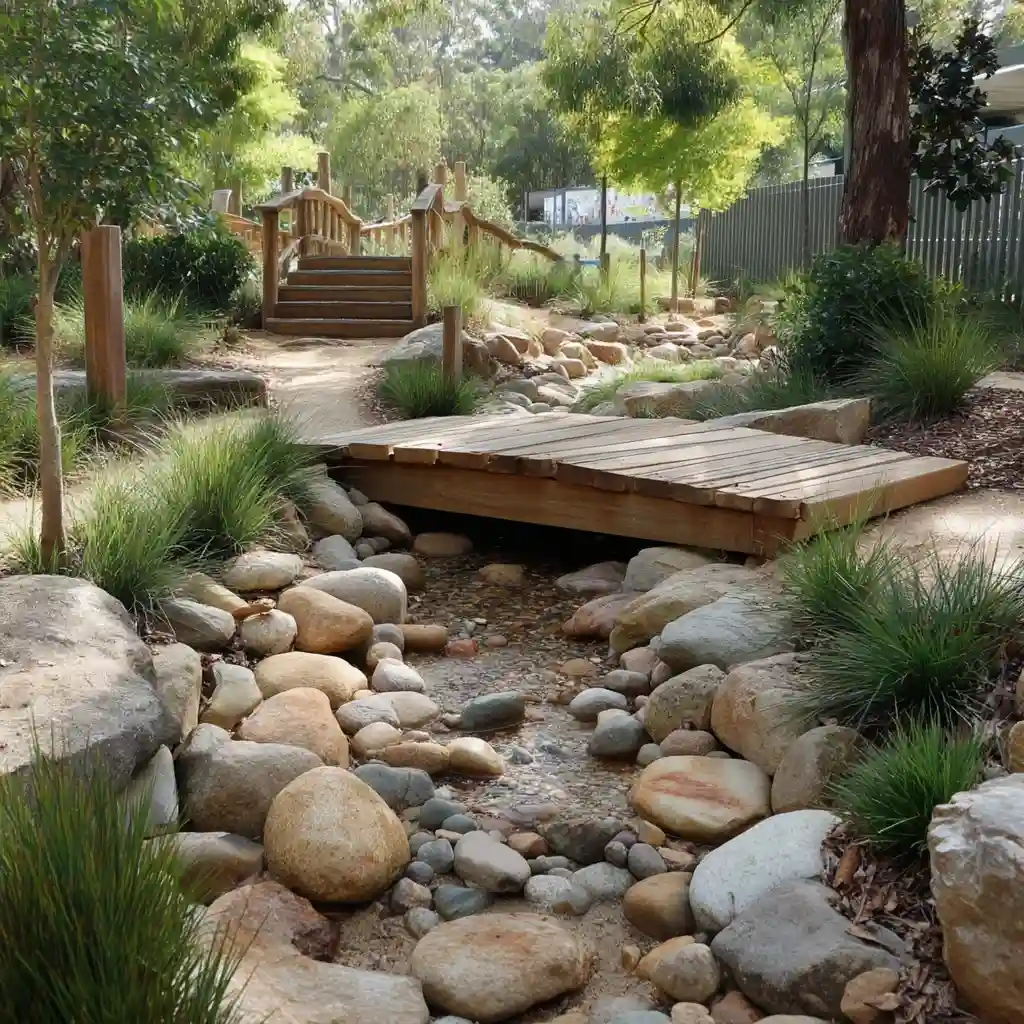
A dry creek bed isn’t just practical—it can also become an engaging feature in a child-friendly outdoor space. In a backyard play zone, it adds structure, visual interest, and even encourages imaginative play.
Design your dry creek bed to flow naturally through the yard, separating activity areas like sandboxes, swings, or garden patches. Use smooth, rounded stones that are safe for children to walk on or explore. Add whimsical elements like a wooden footbridge, stepping stones, or small logs for balance games.
Beyond its playful appeal, this creek bed still serves a functional role—helping with drainage and keeping water from pooling where kids play. It’s a smart way to blend design, utility, and fun all in one landscape feature.
10. Desert Dry Creek Bed
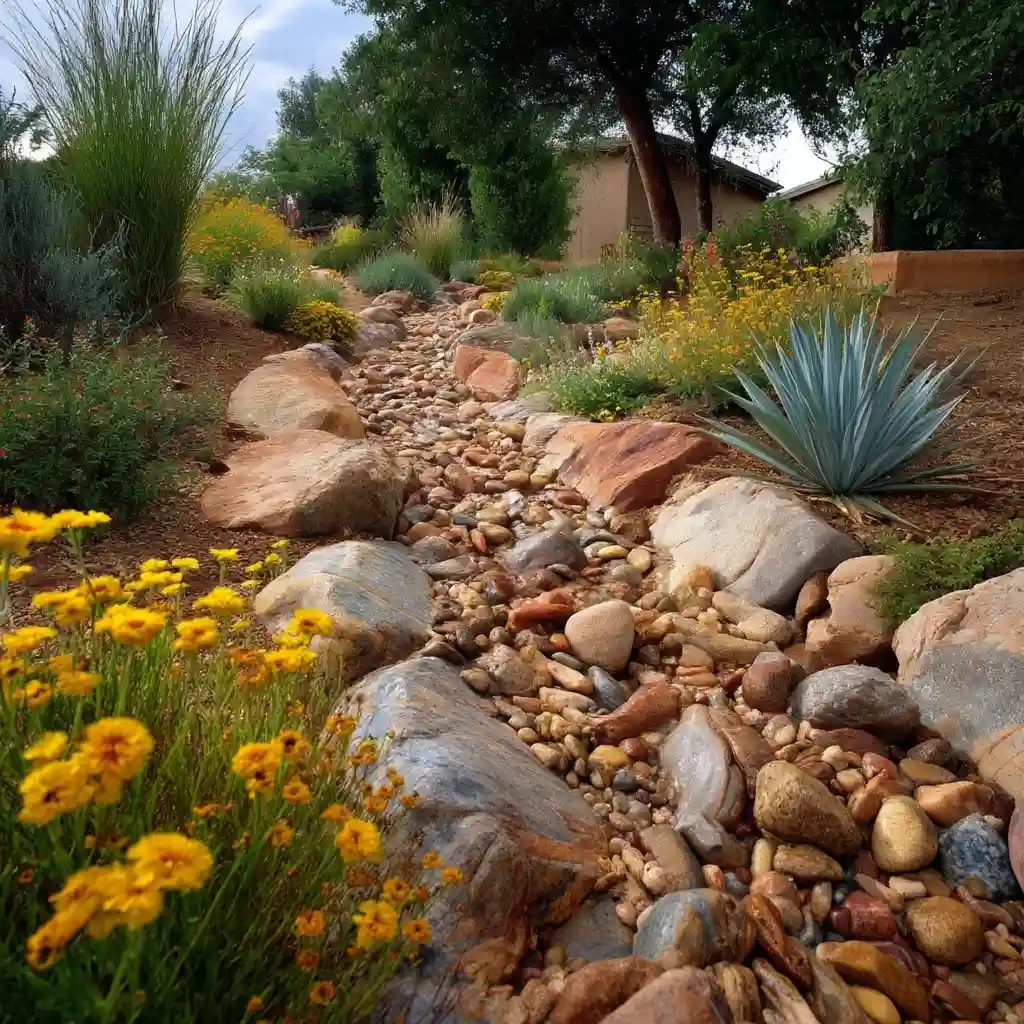
In arid climates where rain is rare, a dry creek bed can serve purely as an aesthetic element—bringing texture, movement, and contrast to xeriscaped yards without using a drop of water.
To design one for a desert landscape, choose rocks in warm earth tones—grays, browns, rusts—that complement the surrounding terrain. Arrange them in flowing patterns that resemble a natural wash or streambed, curving gently through your space.
Accent the bed with drought-tolerant plants like agave, sedum, and desert marigolds. These not only blend well with the rocky theme but also require minimal upkeep. In this setting, the creek bed acts as a sculptural focal point, giving depth and interest to what could otherwise be a flat or barren space.
Conclusion
A dry creek bed is more than just a decorative feature—it’s a versatile landscaping solution that blends form and function. Whether you’re dealing with heavy rainfall, erosion issues, or simply want to add natural charm to your yard, dry creek beds offer endless possibilities. From sloped yards to Japanese gardens, and even playful family spaces, there’s a design that fits every landscape style and climate.
By using natural materials and thoughtful placement, you can create a creek bed that not only solves drainage problems but also becomes a beautiful, low-maintenance centerpiece in your outdoor space.
🌿 Love gardening inspiration? Follow me on Pinterest for bold plant ideas, tips, and seasonal color!
More Posts
